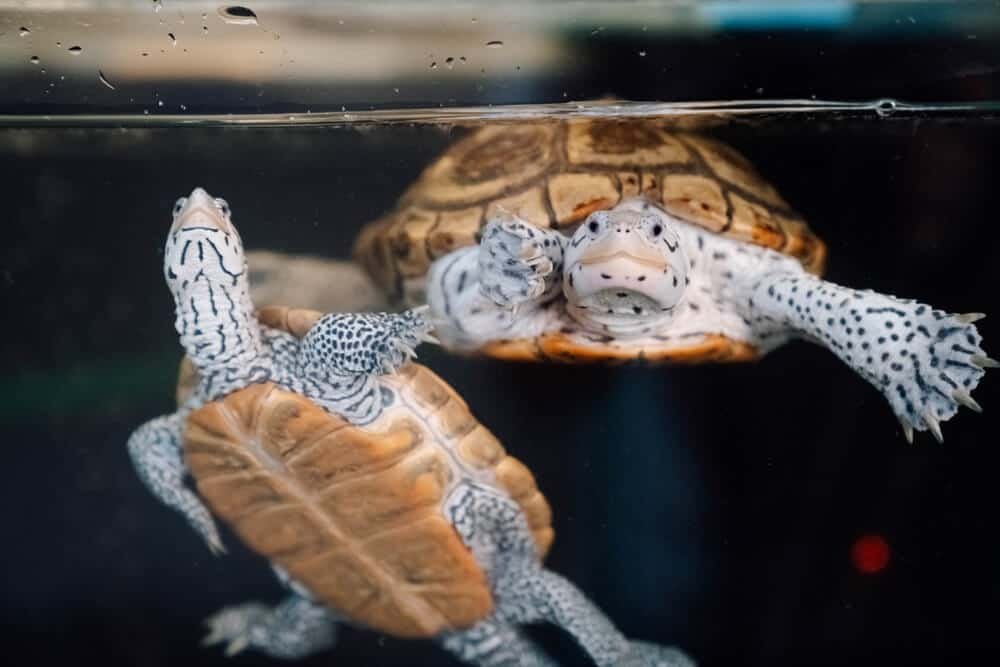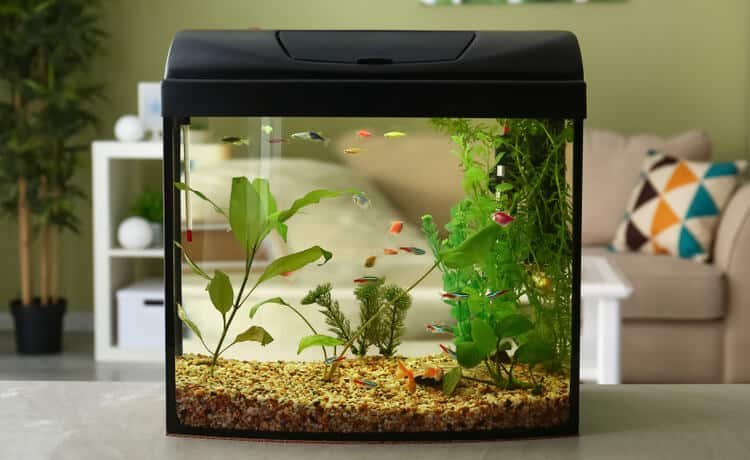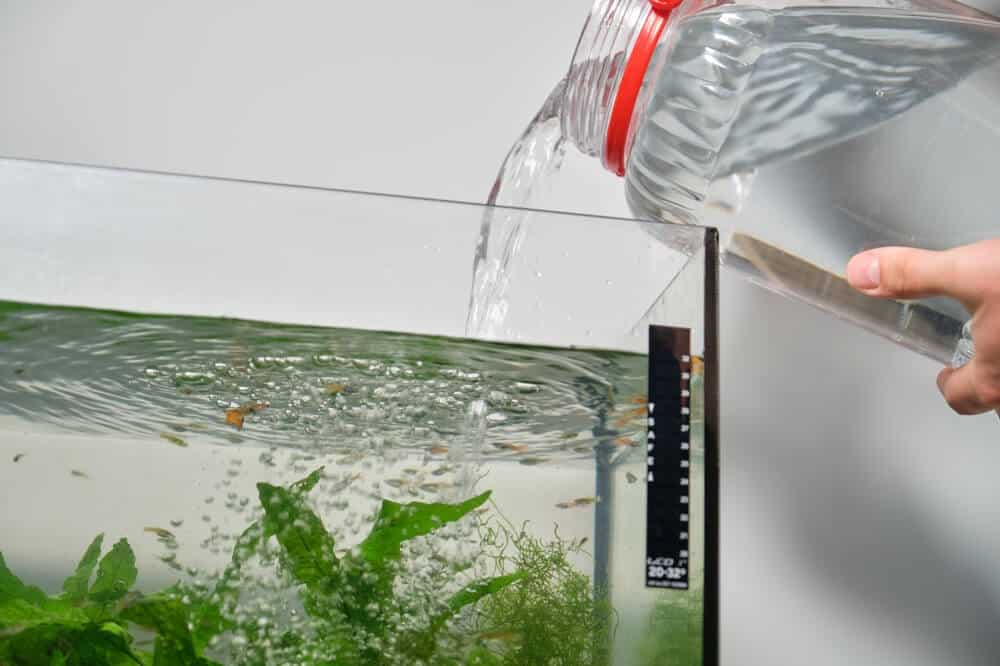Do Aquarium Lights Heat Water?
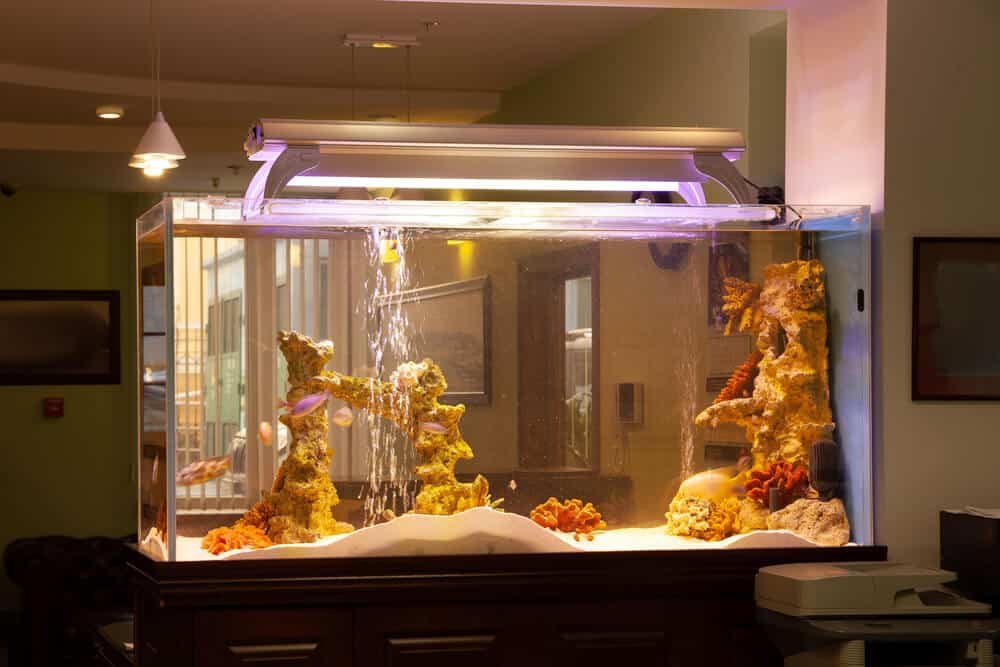
An aquarium can be a great way to add a touch of nature to your home and can be a great way to spend your free time. However, maintaining an aquarium requires a lot of dedication to ensure that everything out smoothly.
If you’ve ever owned an aquarium, you know that the water must be maintained at a specific temperature.
The issue is that you’ll also require a lamp to illuminate your tank. So, how much do aquarium lights really raise the water’s overall temperature?
In this article, we delve into the science of aquarium lighting and find out if it is possible for the lights to heat the tank.
Types of Aquarium Lights
Before discussing how aquarium lights affect water temperature, let’s first take a look at the different types of aquarium light sources.
Various types of aquarium lights are available in the market and each one of them is unique in terms of benefits and drawbacks.
Here are the most common types:
● LED Lights
The longevity, versatility, and efficiency of LED lights have made them a popular lighting savior in recent years. When electric light is passed through LED lights, the tiny diodes emit light.
The light can come out in a wide range of intensities and colors. As such, they are a darling to both saltwater and freshwater aquarists.
The greatest advantage that you can accomplish when using LED light is saving energy. They consume less energy when compared to other types of lights.
In addition, you can manage to have stable temperatures in your tank because of the little consistent heat that is generated by these lights.
When comparing LED lights with other traditional options, you will find that they have a longer lifespan of up to 12 months.
You can therefore stay with them for a longer time before replacing them. You might however need specific LED lights designed for the aquarium because not all of them can serve this purpose.
● Fluorescent Lights
The best part of fluorescent tubes that makes them popular in aquariums is the long tube-shaped bulbs that radiate bright uniform light.
They are also available in various intensities and colors making them a good choice for aesthetic appeal in an aquarium.
Fluorescent lights are affordable and produce less heat when compared to incandescent bulbs.
As such, you can get a more stable tank temperature when using these types of bulbs. You can also buy these bulbs in any store because they are widely available.
However, fluorescent lights can consume more energy than LED lights and may sometimes produce a flickering effect which can affect the fish.
● Incandescent Lights
Incandescent lights are the most popular traditional type of aquarium lighting. They emit light when a current is passed through a filament. They are available in various colors and intensities.
The biggest drawback of incandescent lights is consuming more energy than fluorescent and LED lights, which could significantly raise electricity bills.
They can generate a lot of heat, which can affect the temperature of the tank, thus stressing the aquatic life.
Effects of Aquarium Lights on Water Temperature
Aquarium lights are essential in providing a visually appealing and healthy water environment for the fish.
However, the lights can affect the temperature since they generate a significant amount of heat, which can have various effects on aquatic life.
The increased temperature in aquarium life can cause diseases because bacteria and parasites will thrive well. The amount of oxygen in the tank will also reduce because of increased temperatures.
This results in oxygen depletion which could turn out to be problematic to fish and other tank inhabitants.
Moreover, increased temperatures also promote the growth of algae which could be messy in the tank if it is unwanted.
You can, however, ensure steady temperature by controlling wattage, type of light, or the distance between the water surface and source of light.
If you need a controlled and more stable source of heat in the aquarium, you might consider using LED lights because they emit the least heat, followed by fluorescent and incandescent lights.
Higher-wattage bulbs are bound to generate more heat when compared to lower-wattage bulbs. Also, if you lessen the distance between light and water surface more heat will be generated.
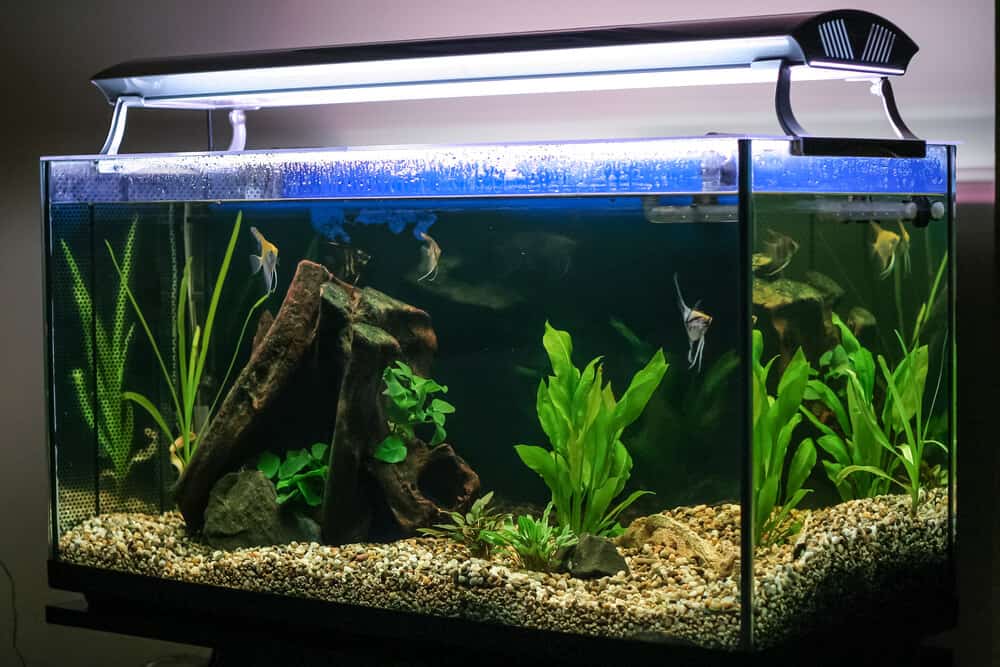
How to Regulate Water Temperature in an Aquarium
If you are concerned about your aquarium heat, you might need to regulate the water temperature, so that the little creatures can enjoy a healthy environment. Here are some of the best ways that you can employ:
● Using aquarium chillers
Aquarium chillers work by dispersing heat outside the aquarium. They are useful in environments where the temperature is high and lights are needed.
You can find these chillers in various capacities and sizes. So, choose the one that will complement your tank and also ensure that it is installed correctly.
● Adjusting light duration and density
You can comfortably adjust light duration and intensity. For instance, you can use lower wattage or LED lights to reduce the intensity of lights.
Alternatively, you can switch off the lights for a specified amount of time to reduce the amount of heat transferred to the water tank.
● Placing the aquarium lights properly
If you realize that your lights are positioned too near to the tank, you might consider placing them further away.
You can also use a diffuser or a reflector to ensure that the emitted light is distributed more evenly to reduce its intensity in some areas.
Final Thoughts
While it is true that aquarium lights produce heat, many different things affect the water’s temperature in your aquarium pool.
The amount of heat transferred to the water in the tank depends on various elements, including wattage, usage time, and light type.
Although increased temperatures in the aquarium tank are not entirely bad, they might be harmful and fatal to some extent. Therefore, it is essential for aquarists to keep on monitoring water temperature to ensure that it is stable.
Fortunately, there are several methods that aquarists can use to control the temperature of the water, protect their aquatic animals from harm, and create a safe habitat.
After all, an aquarium with stable water temperature will ensure the well-being and longevity of aquatic life.
